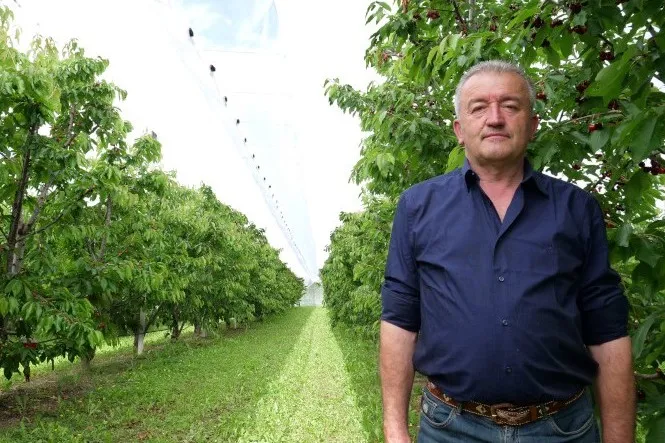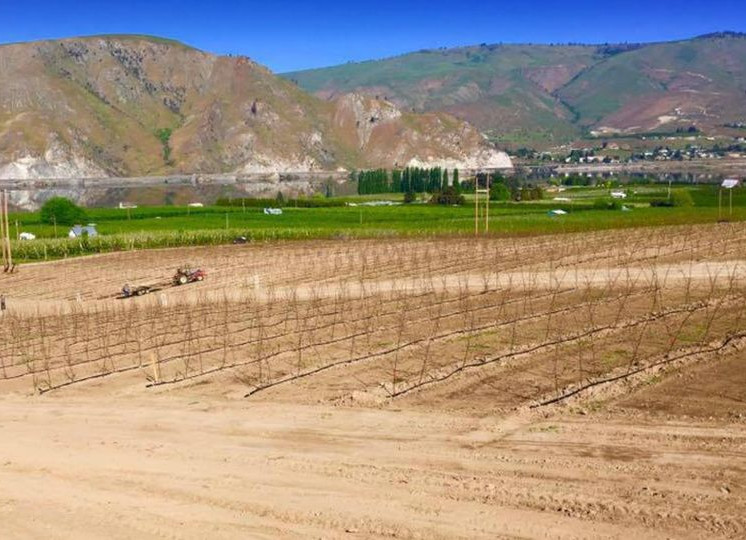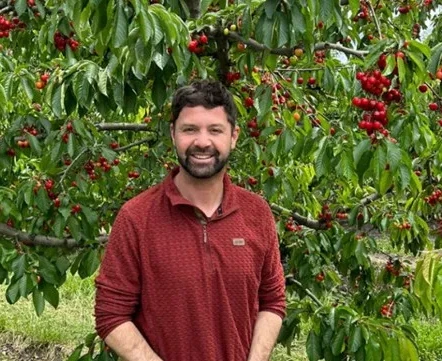There is a place in Italy where the cherry is much more than a fruit: it is a symbol, a shared identity. In Vignola, on the hills between Modena and Bologna, cherry growing is history, culture and technical expertise all at once.
Since 1965, one of the oldest consortia in the Italian fruit and vegetable sector has been active here, founded to protect and promote the Typical Vignola Cherry and Plum. In 2012, with the granting of PGI status, the Consorzio di Tutela della Ciliegia di Vignola PGI was also established, now a benchmark for one of the most structured and recognised quality collective brands in Italy.

Innovation and cherry-growing identity
A clear and passionate analysis of the Italian cherry supply chain comes from Walter Monari, director of both consortia for over thirty years and guest of the initiative “The need for innovation in cherry growing” promoted by Confagricoltura Bari-Bat. From safeguarding origin to facing the challenge of innovation, he helps us take a broader look at an Italian cherry sector that must learn to network and see itself as a unified supply chain.
Let’s start with the Consortium: what does the Vignola PGI Cherry represent today and what activities do you carry out?
Before going into detail, a premise is necessary. In Vignola we have two consortia: the Cherry and Typical Vignola Plum Consortium, founded in 1965, and the Consorzio di Tutela della Ciliegia di Vignola PGI, established in 2012 after the European quality mark was granted.
The first still oversees both cherries and plums today – about 10,000 tonnes per year are produced in Vignola, with extremely high quality – while the second is dedicated exclusively to protecting and promoting the PGI. The latter, with its red-green banner and nine cherries on the crest, has been patented for years and is a guarantee of excellence.
Today, over 70% of the product is marketed as PGI: a remarkably high share if we consider that in other fruit sectors, such as pears or nectarines from Emilia-Romagna, branding percentages remain very low.
Markets and product quality
This is because our brand is not only about origin but also about quality: for decades we have applied an internal specification, carried out checks and maintained consistent standards. Consumers recognise Vignola as a reliable name, synonymous with high and constant quality.
About 90% of our market is domestic, concentrated mainly in Northern Italy, from Florence upwards, where consumers are willing to pay for premium quality.
However, in recent years, due to an overall reduction in production – which today stands between 6,000 and 7,000 tonnes per year – exports have decreased, especially to Switzerland, Germany, the United Kingdom and Arab countries, where demand for high-quality product is very strong.
In recent days you were a guest in Puglia at the event “The need for innovation in cherry growing”. What emerged from the meeting?
I was invited by Massimiliano Del Core, president of Confagricoltura Bari-Bat, because we are launching a supply chain project funded by the NRRP, involving partners from Puglia and Trentino. It includes investments for farms, scientific research and commercial structures.
In this context, I held several technical meetings with growers and technicians in the South Bari area, repeating an experience we had already carried out last winter in the Bisceglie area.
Comparing Vignola and Puglia
As an external observer, how do you judge today’s cherry growing in Puglia?
Puglia has a significant history in cherry production: I remember coming here in the 1980s because growers in Puglia were ahead of us. In Vignola, we believed cherry trees could not be pruned, while here low and productive orchards were already being planted, with excellent varieties such as Ferrovia.
Over time, however, things changed. In Vignola we revolutionised cultivation: today over 40% of orchards have covering systems, some multifunctional, capable of protecting not only from rain but also from pests such as Drosophila suzukii.
This solution has enabled us to reduce plant protection treatments by up to 80%, guaranteeing excellent fruit quality and attractive profitability for growers.
Puglia, on the other hand, has not kept pace with the times, and this is leading to several structural issues.
Criticalities and prospects in Puglia
Covering systems are almost non-existent, and producers continue to focus on late varieties, often trying to advance ripening through treatments, whereas – in my view – it would be more logical to focus on early cultivars, in line with the climate and the opportunity to reach markets sooner.
What are the weaknesses of the cherry sector in Puglia?
One major issue is the absence of a recognised collective brand. Puglia has excellent growers and traders, but each one promotes their own company brand. As a result, “Puglian product” does not have the same commercial strength as Vignola, where everyone works under a shared brand that not only provides visibility but also access to funds linked to PGI certification.
Then there is a structural issue: there are no experimental fields to test rootstocks and new varieties under local conditions. Without experimentation, farmers rely on advice from traders or nurserymen, which does not always coincide with the farm’s technical interest.
Finally, better planning is needed. Often growers order plants in autumn, when nurseries have already sold everything. In many European countries plants are booked a year in advance, and this organisation is essential to avoid mistakes and ensure quality materials.
Supply chains and the future
Overall, I believe that Puglia has all the potential to revive its cherry sector, and I am also thinking of the recent regional funding call for investments. On the other hand, a change in mindset is needed, together with investment in research, innovation and new varieties.
You mentioned an “Italian cherry supply chain”. Is it a dream or still an achievable goal?
More than a dream, it was once a concrete project. Around fifteen years ago I proposed the idea of “Cherries of Italy”: a national brand bringing together the main production areas – Puglia, Vignola, Veneto and Trentino – while preserving local identities.
The idea was simple: each consortium would keep its own specification and controls, but together we could offer Italian premium cherries to large-scale retailers for four months of the year, from May to August.
Looking at production windows, the calendar is well distributed: the season starts with Puglia, followed by Vignola, and ends with Melinda in Trentino.
In an Italian supply chain perspective, everyone would benefit, maintaining identity while speaking with a single voice.
From a practical standpoint, while such a partnership could begin tomorrow with organisations like Melinda, which are already moving in this direction, unfortunately this is not yet the case with Puglia.
Looking ahead, how do you see the future of Italian cherry growing?
I would say it is not easy, but there is room for those who focus on quality. Cherry trees grow well in Trentino, Piedmont and Vignola. Here, in particular, production is holding up, but we suffer from a lack of young growers.
Puglia, meanwhile, faces problems related to varieties, orchard structures and new threats such as Armillaria mellea and Drosophila suzukii, which is now emerging and could become a serious issue if investment in covering systems does not increase.
Ultimately, the market exists, demand is strong, but organisation is needed. Until a few years ago the problem was selling; today, the problem is having the right product, in sufficient quantity, to meet a market that – when it finds quality – is ready to recognise it.
Image source: myfruit
Ilaria De Marinis
Fruit Journal
Cherry Times – All rights reserved













